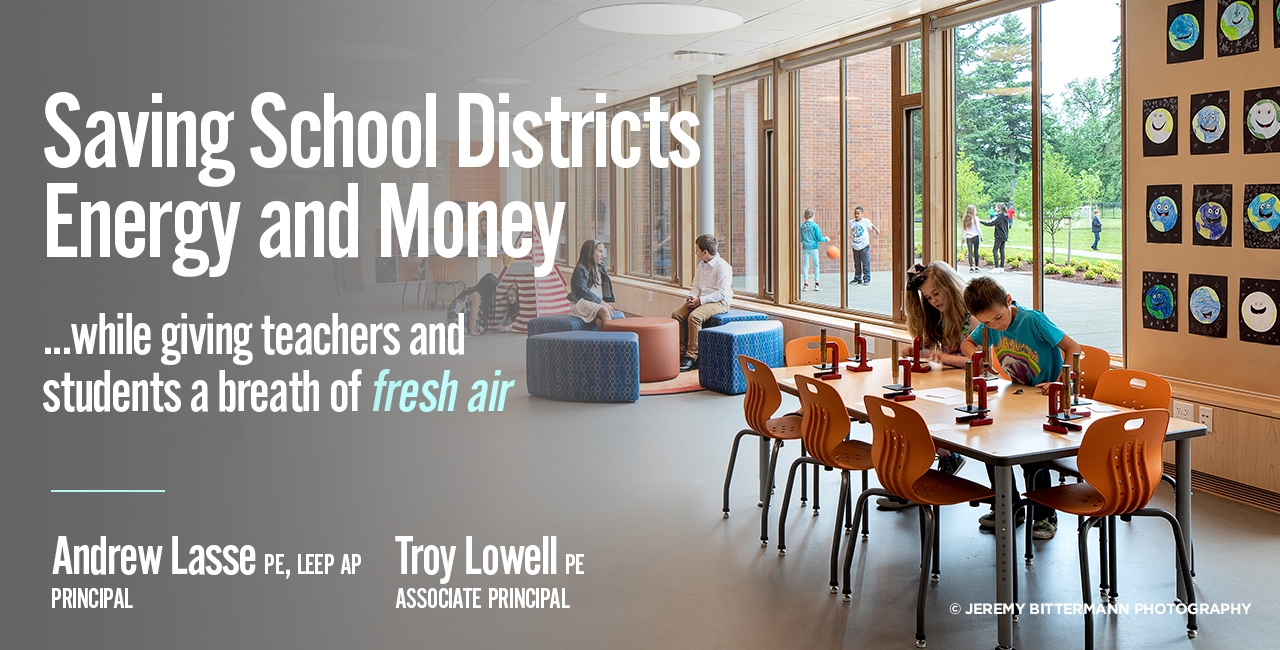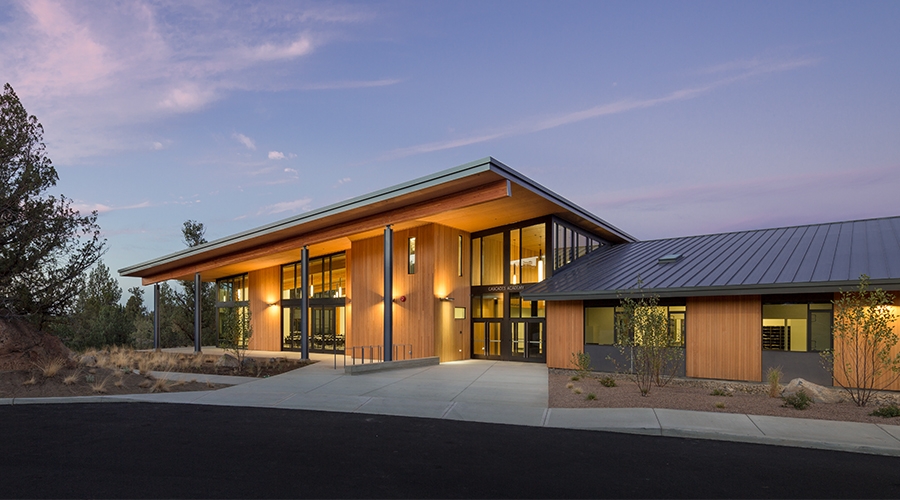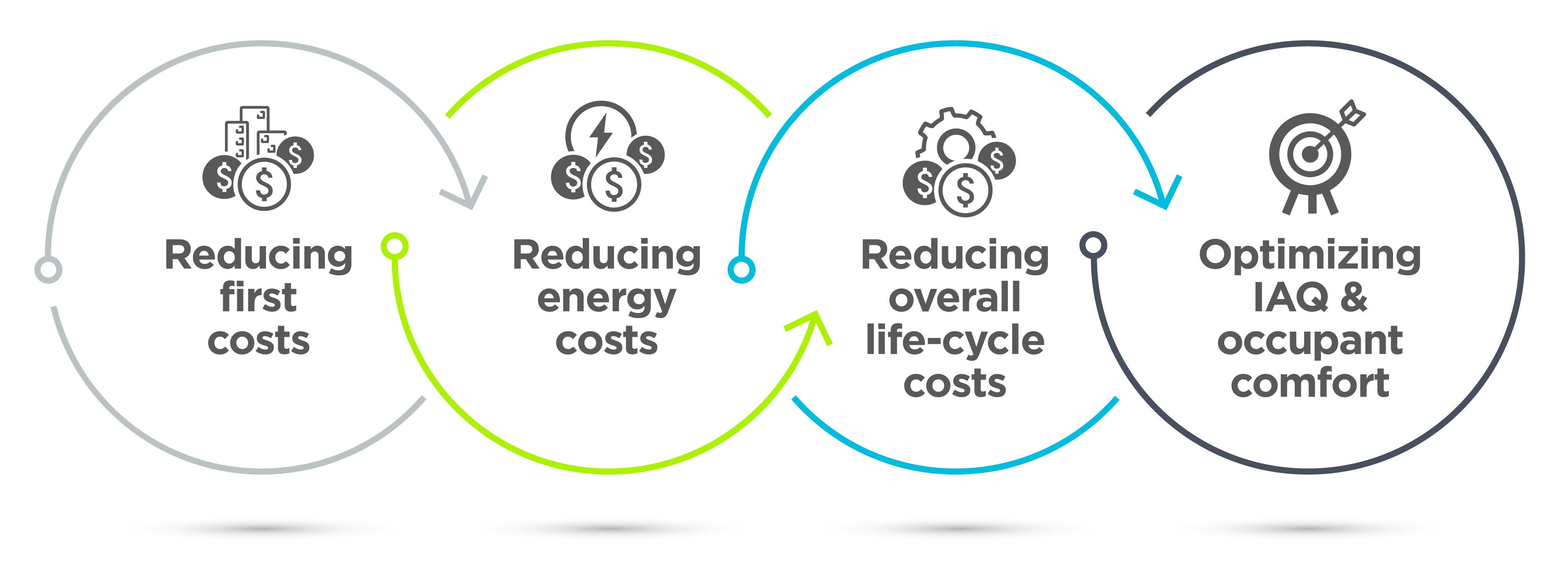
Saving School Districts Energy and Money
...while giving teachers and students a breath of fresh air
Mar 18, 2021
by Andrew Lasse and Troy Lowell
On every K12 project, our primary goals include optimizing long term energy savings, reducing first costs and maintenance costs, and improving indoor air quality for students and staff. The uninvited arrival of Covid-19 in 2020 has brought a new sense of urgency to the question of occupant health and wellness. While there are many well documented approaches on how to retrofit existing systems to optimize indoor air quality (IAQ) as it relates to Covid-19, the next question is: how can we design new schools to optimize IAQ and best protect the health and wellness of students and staff long into the future? Fortunately, there is an elegant and simple HVAC solution – one of which Interface has been implementing as a strategy for years to address these very challenges in our K12 schools.

Heating, ventilation, and cooling equipment, their corresponding costs, as well as occupant comfort are all interconnected as a system in K-12 design. As a rule, we take an integrated approach to addressing these elements, focusing on four priorities.

Design teams often select HVAC systems that address a singular or narrow goal without consideration of the all priorities in unison. However, by taking each of the four goals above into account as an integrated network of influences, we’ve found that one HVAC system approach consistently outperforms the others: Displacement Ventilation (DV) and Dedicated Outside Air Systems (DOAS) with hydronic heating.
We’ve used DV systems in schools for many years. This system is the gold standard when it comes to providing the best possible indoor air quality for students and staff. Air is supplied low, and exhausted high within each space, reducing mixing of airstreams and contaminants all while providing a quiet, comfortable, and energy efficient environment.
Working closely with the Architect and School District from the very beginning of the design process, we can show how each priority and goal is achieved. We take a unique approach to utilizing DV and DOAS systems for our school projects, which includes reducing rooftop equipment sizes, simplifying controls, and providing the benefit of partial cooling and economizer cooling. While this approach primarily focuses on classrooms, it can be applied in other areas throughout the facilities, as well. Here is how each of our four priorities are achieved:
Reducing First Costs: Utilizing a DOAS for the DV system reduces the Air Handler unit (AHU) sizing by up to 40%. Additionally, the unit’s exhaust fan essentially replaces multiple exhaust fans normally spread throughout the building, further reducing added equipment and power connections. The DOAS also provides partial cooling, due to the nature of the supply air temperature and distribution in each classroom. All of these elements help reduce first cost significantly.
Reducing Energy Costs: This happens in multiple ways. By utilizing heat recovery elements in the DOAS, we are able to extract heat from the exhaust air in the building and transfer it to the fresh outside air being supplied to each zone. Additionally, the hydronic system contributes to energy savings by virtue of its higher thermal capacity than air. Using water as the fluid for transferring heat through the use of radiant systems at the building perimeter is a very efficient way to heat as compared to using recirculated forced air systems.
Reducing Overall Life Cycle Costs: Hydronic systems contribute to reduction of long term life cycle costs of the facility, as compared to refrigerant based VRF systems or packaged RTUs which have an anticipated life of approximately 20 years. The fluid for heat transfer is water and replacement is a straightforward drain and fill process. The simpler the system, the more maintainable, and therefore reduces long term (50+ year) life cycle costs.
Optimizing IAQ: The Covid-19 pandemic has put this goal in the spotlight, and few HVAC systems rival this one for providing the best possible indoor air environment. The DOAS supplies fresh 100% outside air to students and staff all day. None of the air that is supplied to classrooms is recirculated within the space, which differs significantly from standard mixed air systems such as VAV, Packaged Rooftop, and VRF. The amount of outside air provided is typically 30% higher than ASHRAE 62 requirements, in line with LEED recommendations for enhanced indoor air quality. The outside air is even filtered using MERV 13 filtration to reduce outdoor pollutants including wildfire smoke.
Ultimately, the DV, DOAS, and hydronic heat system approach is inherently simple – even elegant in its ability to simultaneously address the major priorities of School Districts and design teams for K-12 projects.
Reducing First Costs = DOAS, Smaller AHUs
Reducing Energy Costs = Heat Recovery, DOAS, Hydronic Heating
Reducing Life Cycle Costs = Hydronics, DOAS, Low Maintenance
Optimizing IAQ = DV non mixing systems, DOAS
With thoughtful execution and early coordination with the Architect and School District, this system approach can give us healthier schools at lower up front cost and long term energy savings. What a breath of fresh air!